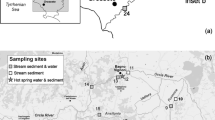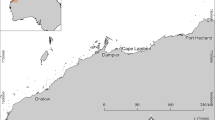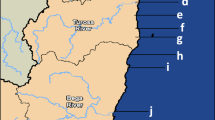Abstract
Several cores of 31 collected in 1965 in the St. Anna Trough, Kara Sea, have very high concentrations of Hg and As in surface/near-surface samples. Mercury contents range from 94 to 3915 ppb with a mean of 444 ppb and a baseline value of 314 ppb. Arsenic contents range from 5 to 710 ppm with a mean of 51 ppm and a baseline value of 23 ppm. The Hg and part of the As loading is likely anthropogenic from industrial activities in Siberia via atmospheric emission and deposition onto catchments. This is followed by mobilization into fluvial systems and is added to by industrial effluent discharge. Post-depositional diagenesis from depth in the cores contributes to high As values. A north-flowing bottom current transports Hg- and As-bearing suspended material from the Ob River sea discharge zone to depositional environments in the St. Anna Trough. Dumping of military materials and other wastes into the Kara Sea from the late 1940s to 1991 has likely added to Hg and As loading in the trough sediments. The bioavailability of mercury from suspended materials may be the reason why higher than normal levels of these potentially toxic elements are found in European Arctic seabirds, ringed seal and polar bear.
Similar content being viewed by others
Author information
Authors and Affiliations
Additional information
Received: 12 December 1999 · Accepted: 23 May 2000
Rights and permissions
About this article
Cite this article
Siegel, F., Kravitz, J. & Galasso, J. Arsenic and mercury contamination in 31 cores taken in 1965, St. Anna Trough, Kara Sea, Arctic Ocean. Environmental Geology 40, 528–542 (2001). https://doi.org/10.1007/s002540000194
Issue Date:
DOI: https://doi.org/10.1007/s002540000194




